Abstract
We review nesting sea duck population declines in Alaska during recent decades and explore the possibility that contaminants may be implicated. Aerial surveys of the surf scoter (Melanitta perspicillata), white-winged scoter (M. fusca), black scoter (M. nigra), oldsqaw (Clangula hyemalis), spectacled eider (Somateria fischeri), and Steller's eider (Polysticta stellei) show long-term breeding population declines, especially the latter three species. The spectacled eider was recently classified threatened under the Endangered Species Act. In addition, three other diving ducks, which commonly winter in coastal areas, have declined from unknown causes. Large die-offs of all three species of scoters during molt, a period of high energy demand, were documented in August 1990, 1991, and 1992 at coastal reefs in southeastern Alaska. There was no evidence of infectious diseases in those scoters. The die-offs may or may not be associated with the long-term declines. Many scoters had elevated renal concentrations of cadmium (high of 375 micrograms/g dry weight [dw]). Effects of cadmium in sea ducks are not well understood. Selenium concentrations in livers of nesting white-winged scoters were high; however, the eggs they laid contained less selenium than expected based on relationships for freshwater bird species. Histological evaluation found a high prevalence of hepatocellular vacuolation (49%), a degenerative change frequently associated with sublethal toxic insult. Cadmium and selenium mean liver concentrations were generally higher in those birds with more severe vacuolation; however, relationships were not statistically significant. We do not know if sea duck population declines are related to metals or other contaminants.
Full text
PDF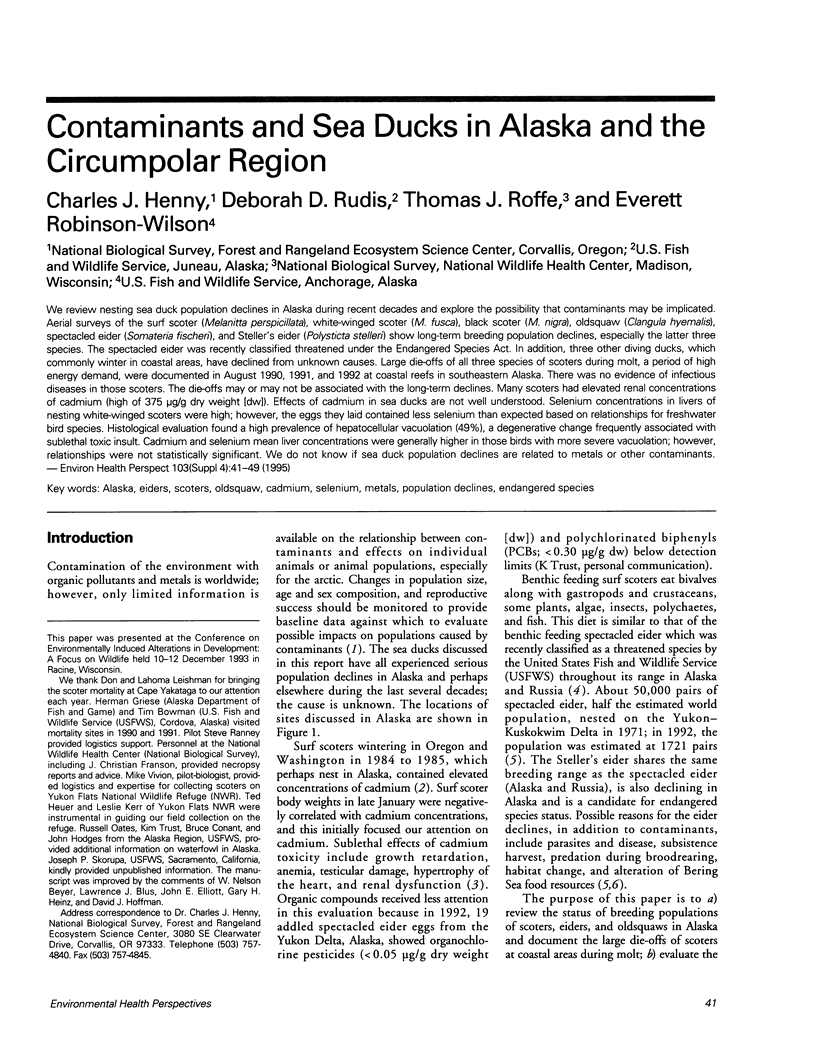
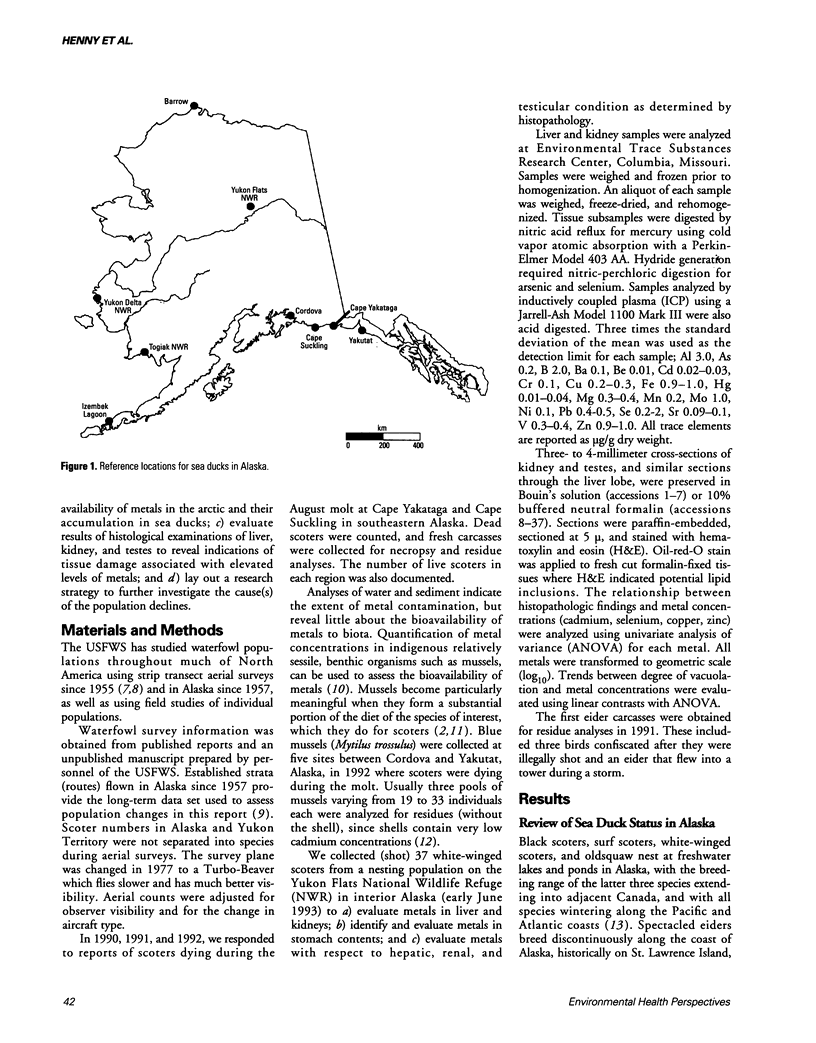
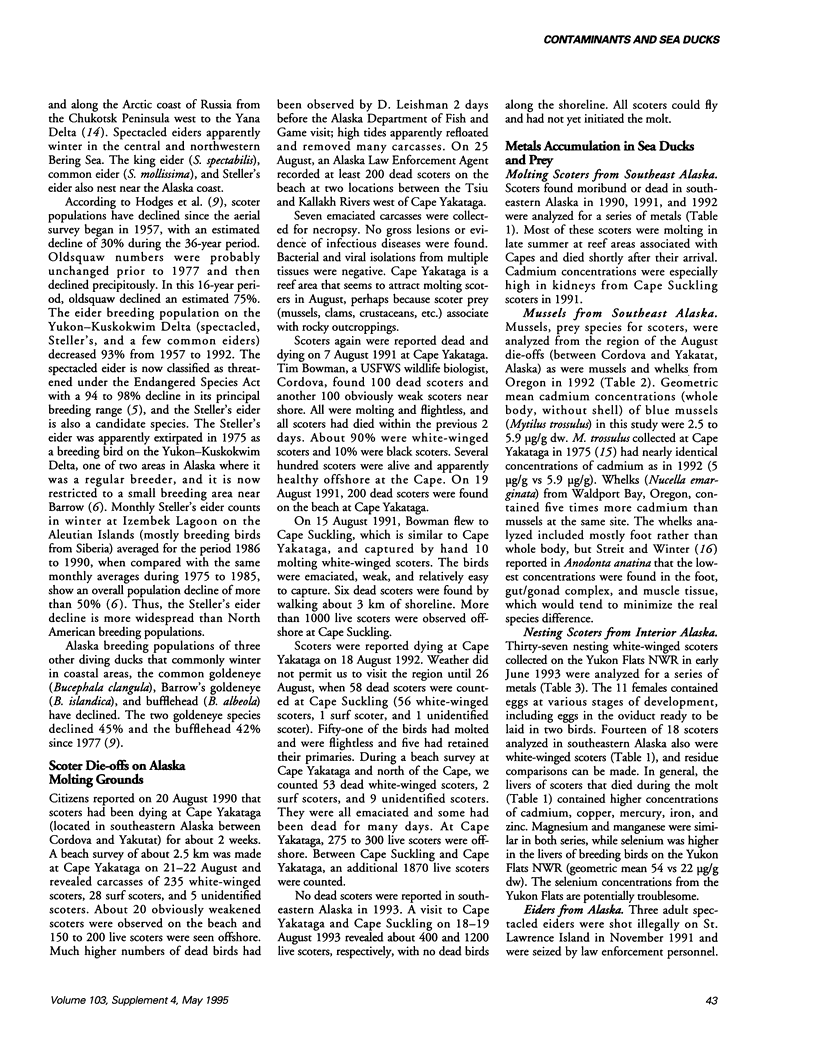
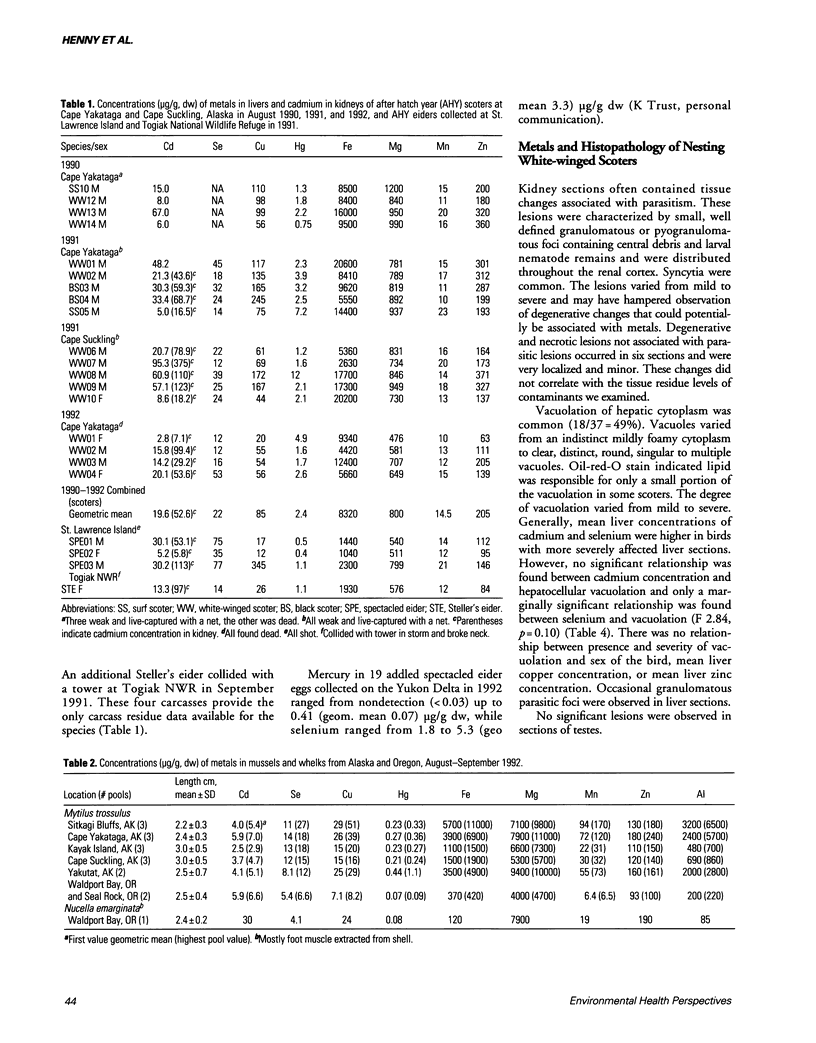
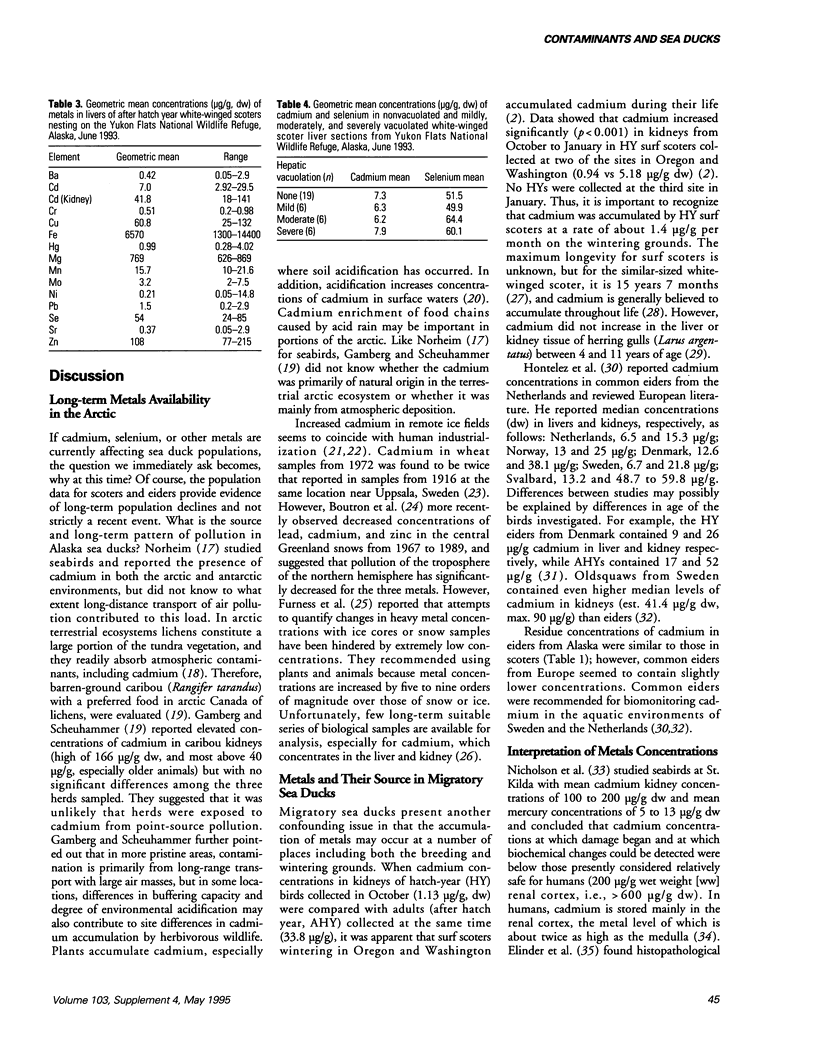
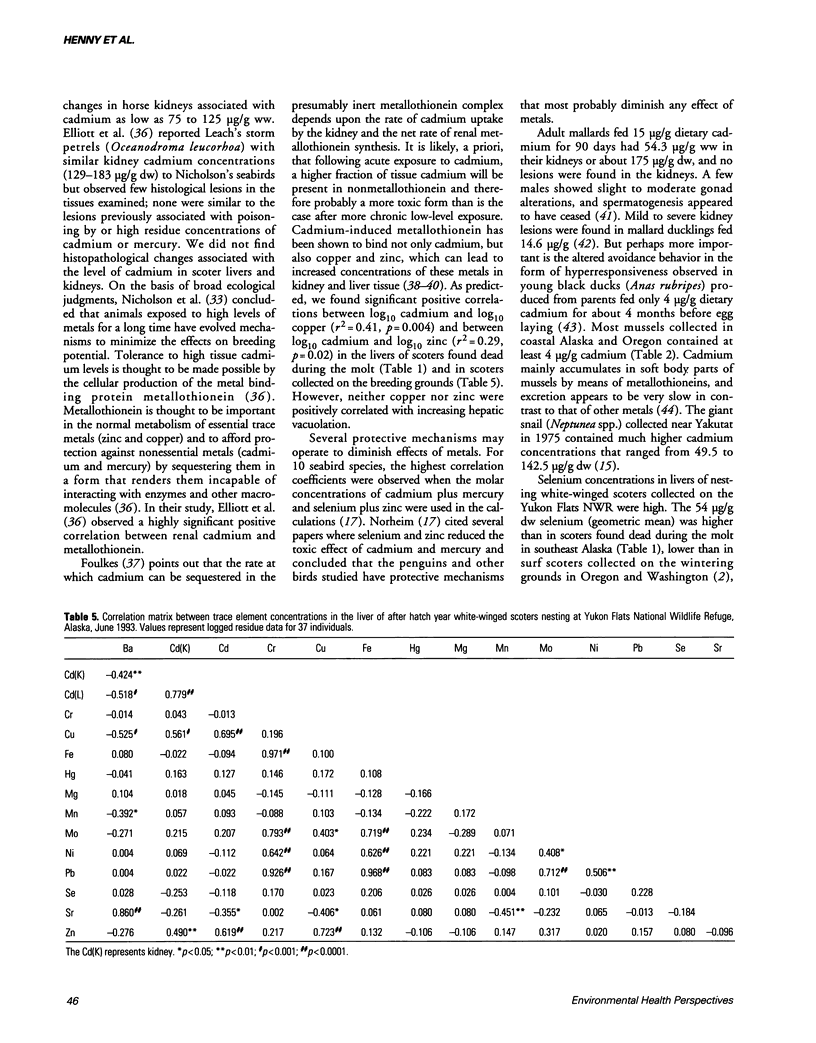

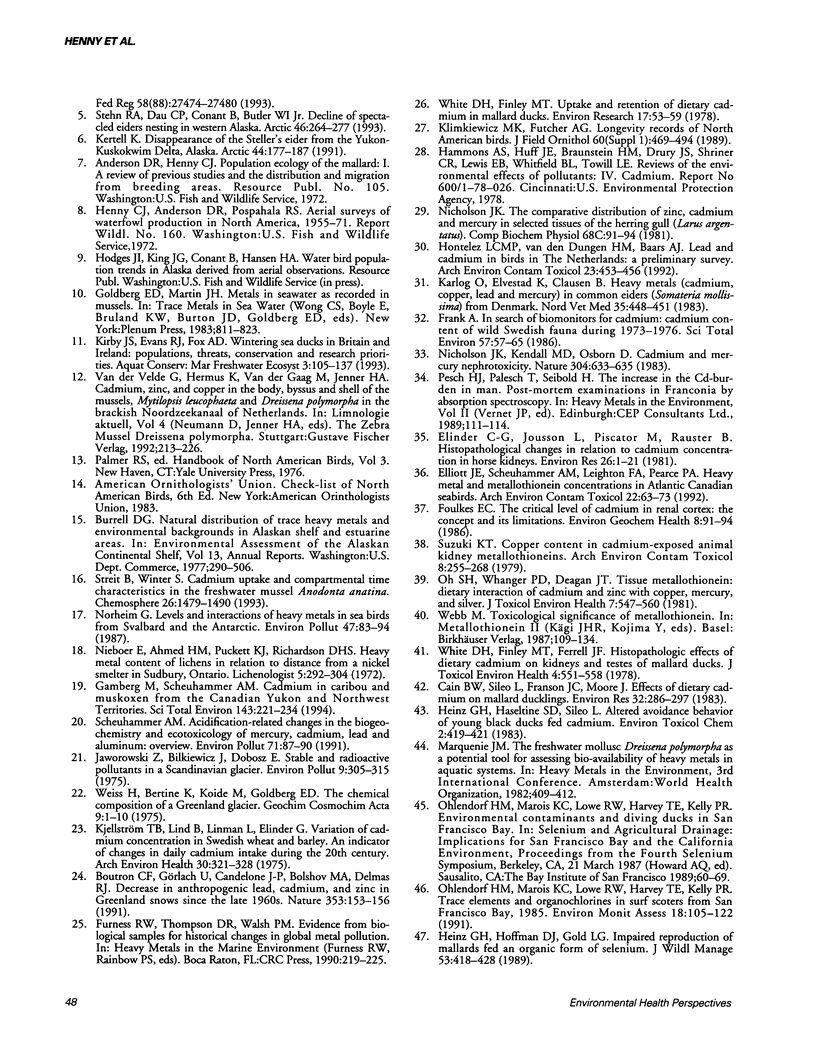
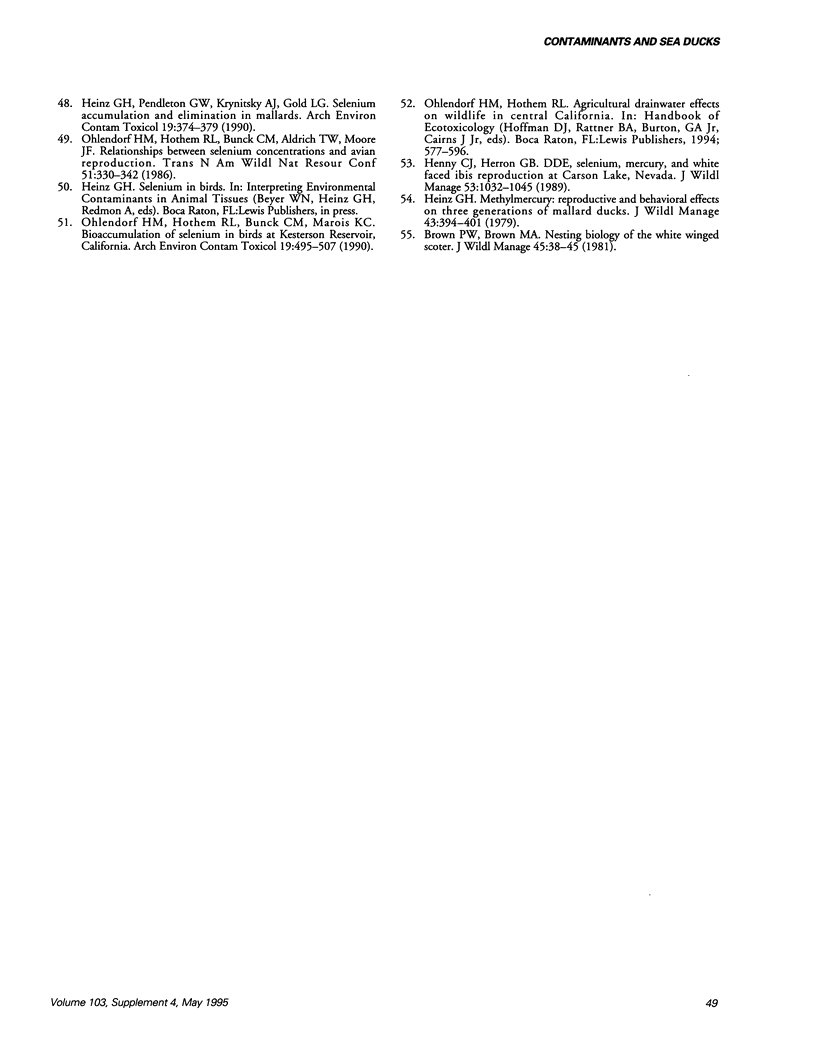
Selected References
These references are in PubMed. This may not be the complete list of references from this article.
- Cain B. W., Sileo L., Franson J. C., Moore J. Effects of dietary cadmium on mallard ducklings. Environ Res. 1983 Dec;32(2):286–297. doi: 10.1016/0013-9351(83)90112-3. [DOI] [PubMed] [Google Scholar]
- Elinder C. G., Jönsson L., Piscator M., Rahnster B. Histopathological changes in relation to cadmium concentration in horse kidneys. Environ Res. 1981 Oct;26(1):1–21. doi: 10.1016/0013-9351(81)90179-1. [DOI] [PubMed] [Google Scholar]
- Elliott J. E., Scheuhammer A. M., Leighton F. A., Pearce P. A. Heavy metal and metallothionein concentrations in Atlantic Canadian seabirds. Arch Environ Contam Toxicol. 1992 Jan;22(1):63–73. doi: 10.1007/BF00213303. [DOI] [PubMed] [Google Scholar]
- Frank A. In search of biomonitors for cadmium: cadmium content of wild Swedish fauna during 1973-1976. Sci Total Environ. 1986 Dec 1;57:57–65. doi: 10.1016/0048-9697(86)90009-4. [DOI] [PubMed] [Google Scholar]
- Gamberg M., Scheuhammer A. M. Cadmium in caribou and muskoxen from the Canadian Yukon and Northwest Territories. Sci Total Environ. 1994 Apr 15;143(2-3):221–234. doi: 10.1016/0048-9697(94)90459-6. [DOI] [PubMed] [Google Scholar]
- Heinz G. H., Pendleton G. W., Krynitsky A. J., Gold L. G. Selenium accumulation and elimination in mallards. Arch Environ Contam Toxicol. 1990 May-Jun;19(3):374–379. doi: 10.1007/BF01054981. [DOI] [PubMed] [Google Scholar]
- Karlog O., Elvestad K., Clausen B. Heavy metals (cadmium, copper, lead and mercury) in common eiders (Somateria mollissima) from Denmark. Nord Vet Med. 1983 Dec;35(12):448–451. [PubMed] [Google Scholar]
- Kjellström T., Linnman L., Elinder CarlGustaf Variation of cadmium concentration in Swedish wheat and barley. An indicator of changes in daily cadmium intake during the 20th century. Arch Environ Health. 1975 Jul;30(7):321–328. doi: 10.1080/00039896.1975.10666714. [DOI] [PubMed] [Google Scholar]
- Nicholson J. K., Kendall M. D., Osborn D. Cadmium and mercury nephrotoxicity. Nature. 1983 Aug 18;304(5927):633–635. doi: 10.1038/304633a0. [DOI] [PubMed] [Google Scholar]
- Nicholson J. K. The comparative distribution of zinc, cadmium and mercury in selected tissues of the herring gull (Larus argentatus). Comp Biochem Physiol C. 1981;68C(1):91–94. doi: 10.1016/0306-4492(81)90042-3. [DOI] [PubMed] [Google Scholar]
- Norheim G. Levels and interactions of heavy metals in sea birds from Svalbard and the Antarctic. Environ Pollut. 1987;47(2):83–94. doi: 10.1016/0269-7491(87)90039-x. [DOI] [PubMed] [Google Scholar]
- Oh S. H., Whanger P. D., Deagen J. T. Tissue metallothionein: dietary interaction of cadmium and zinc with copper, mercury, and silver. J Toxicol Environ Health. 1981 Mar-Apr;7(3-4):547–560. doi: 10.1080/15287398109530000. [DOI] [PubMed] [Google Scholar]
- Ohlendorf H. M., Hothem R. L., Bunck C. M., Marois K. C. Bioaccumulation of selenium in birds at Kesterson Reservoir, California. Arch Environ Contam Toxicol. 1990 Jul-Aug;19(4):495–507. doi: 10.1007/BF01059067. [DOI] [PubMed] [Google Scholar]
- Scheuhammer A. M. Acidification-related changes in the biogeochemistry and ecotoxicology of mercury, cadmium, lead and aluminium: overview. Environ Pollut. 1991;71(2-4):87–90. doi: 10.1016/0269-7491(91)90029-v. [DOI] [PubMed] [Google Scholar]
- Suzuki K. T. Copper content in cadmium-exposed animal kidney metallothioneins. Arch Environ Contam Toxicol. 1979;8(3):255–268. doi: 10.1007/BF01056242. [DOI] [PubMed] [Google Scholar]
- White D. H., Finley M. T., Ferrell J. F. Histopathologic effects of dietary cadmium on kidneys and testes of mallard ducks. J Toxicol Environ Health. 1978 Jul;4(4):551–558. doi: 10.1080/15287397809529678. [DOI] [PubMed] [Google Scholar]
- White D. H., Finley M. T. Uptake and retention of dietary cadmium in mallard ducks. Environ Res. 1978 Aug;17(1):53–59. doi: 10.1016/0013-9351(78)90060-9. [DOI] [PubMed] [Google Scholar]


